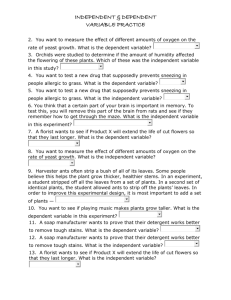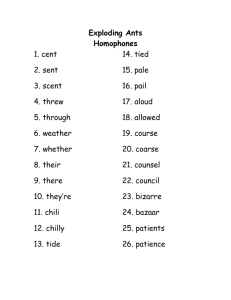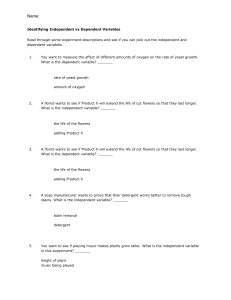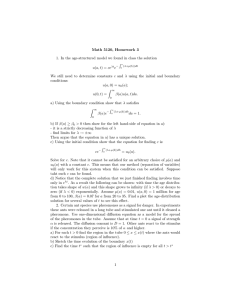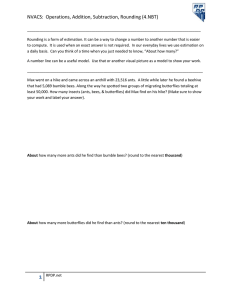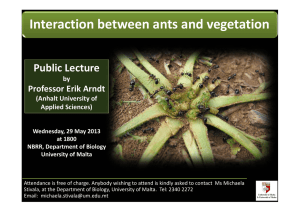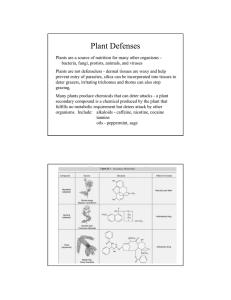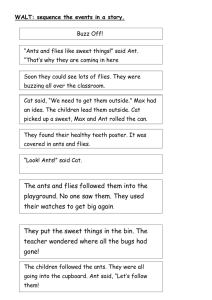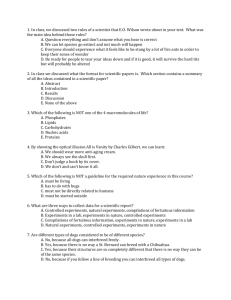TheScientificMethod
advertisement
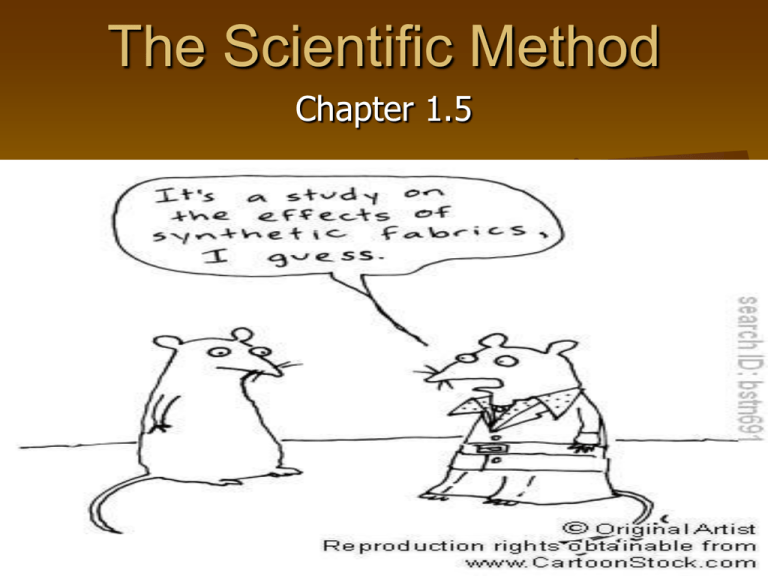
The Scientific Method Chapter 1.5 1. State the problem The question you want to answer. What you are trying to find. 2. Research/Observe Anything you notice about the problem. Anything else you can learn. 3. Form a hypothesis A likely, testable explanation of the problem. 4. Test the Hypothesis/ Experiment Experiment to find data and possible answers to your problem. 5. Collect Data Information (Qualitative) or measurements (Quantitative- #s) from the experiment. 6. Form a Conclusion Decide what the information means. Experimental Variables Different factors that can change during an experiment are known as variables. 1. Independent Variable • Is the variable an experimenter can change. Is Plant Growth Affected by: Examples: Sunlight Food Change only 1 variable at a time Water Temperature 2. Dependent Variable Is the variable that occurs as a result of the experimenters’ change. Examples: • Size of the leaves • Tallness (cm of growth) Color of leaves • Number of flower buds Independent or Dependent? 1. You want to see if playing music makes plants grow taller. What is the dependent variable in this experiment? Plant Height Independent or Dependent? You want to measure the effect of different amounts of oxygen on the rate of yeast growth. What is the dependent variable? Yeast Growth Independent or Dependent? An entomologist (bug scientist) wants to determine if temperature changes how many times a cricket chirps. What is the independent variable? Temperature Independent or Dependent? You think that a certain part of your brain is important in memory. To test this, you will remove this part of the brain from rats and see if they remember how to get through the maze. What is the independent variable in this experiment? When Designing an Experiment keep these in mind! You change only 1 variable at a time when experimenting. The rest of the variables you would hold CONSTANT. 1. Control Group Contains all the parts of an experiment EXCEPT the one experimental factor being tested. A control is a standard to which you can compare your results. 2. Experimental Group Contains all the factors of the control group PLUS the one factor that is being tested. Control & Experimental Group Harvester ants often strip a bush of all of its leaves. Some people believe this helps the plant grow thicker, healthier stems. In an experiment, a student stripped off all the leaves from a set of plants. In a second set of identical plants, the student allowed ants to strip off the plants’ leaves. In order to improve this experimental design, it is most important to add a set of plants that: HAVE LEAVES Ants Count

